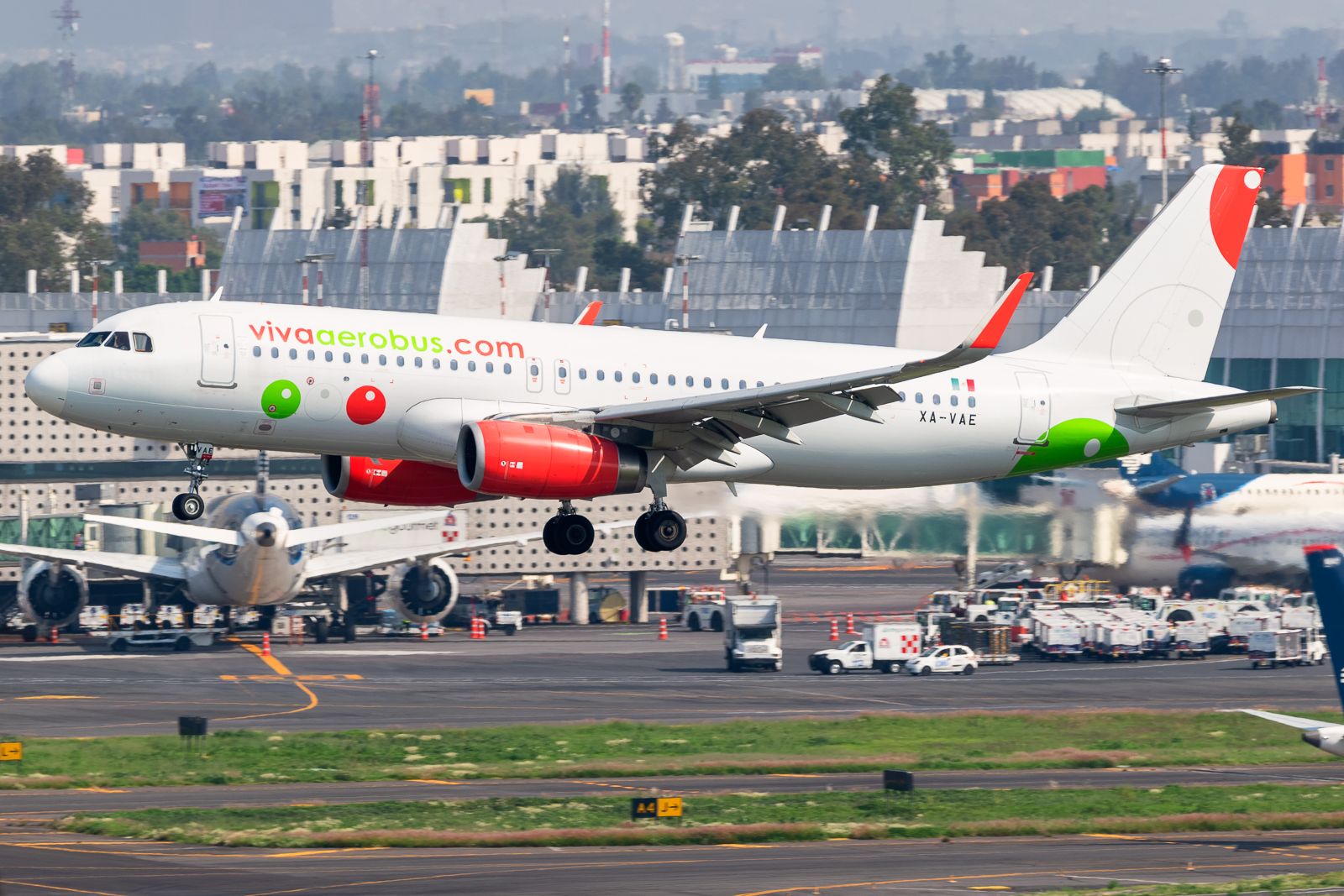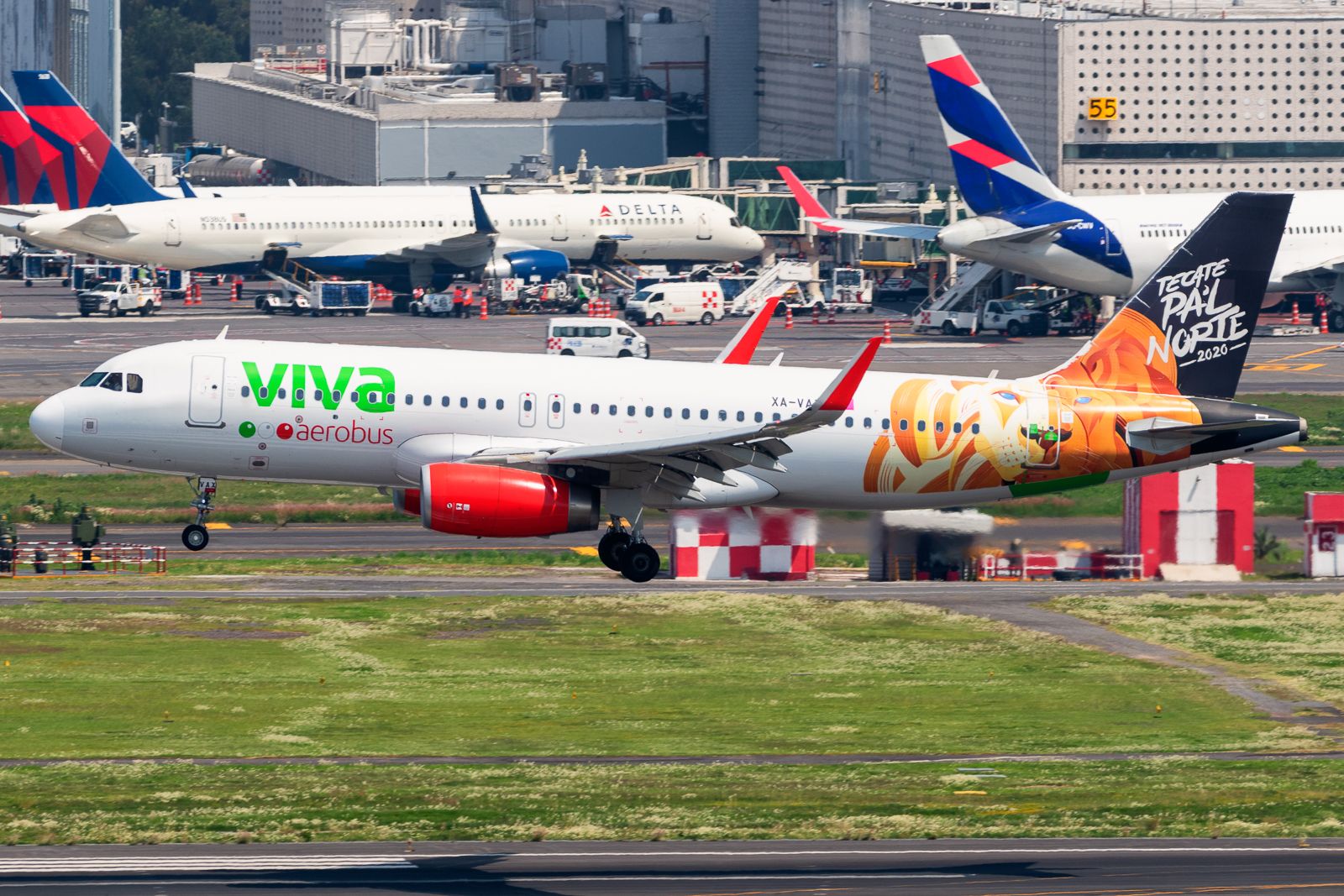On Tuesday, a Viva Aerobus Airbus A320 suffered an engine failure shortly after departing from Guadalajara International Airport (GDL) en route to Los Angeles International Airport (LAX). The incident was recorded on camera and posted on social media, and it can be seen how the right engine is on fire while the aircraft is in the air.
The incident
Viva Aerobus deployed an Airbus A320-200, registration XA-VAJ, to operate flight VB518 between Guadalajara and Los Angeles. The flight departed at 22:03 local time and landed nearly an hour later in Guadalajara following the failure of its right engine, a V2500 manufactured by International Aero Engines.
According to local reports, the aircraft was climbing out of Guadalajara’s runway 10 when the passengers heard a loud boom from the right engine. Streaks of flames and sparks were later seen being emitted by the engine. The Aviation Herald reports that the crew stopped the climb at 13,000 feet, shut the engine down, and returned to Guadalajara. They safely landed the aircraft and postponed the flight for nearly 12 hours. Flight VB518 departed again at 6:50 on Wednesday, employing an Airbus A320neo registration XA-VIJ, according to data by FlightRadar24.com.
As of Wednesday afternoon, the Airbus A320 involved in the engine failure remains parked in Guadalajara. Simple Flying reached Viva Aerobus for comment. The airline said,
"In accordance with established safety protocols, the Viva Aerobus crew returned to Guadalajara International Airport, making a successful landing at 22:45 hours, confirming the safety of all passengers on board and all crew members. Control of the aircraft was maintained at all times in accordance with the procedures established by the manufacturer, which are designed to continue safe operation under these conditions. In addition, the crew provided timely and professional attention to passengers who required it."
Discover more aviation news here!
The aircraft
Viva Aerobus’ Airbus A320-200 registration XA-VAJ is a 7.06 years old aircraft, first received in September 2015. It has a capacity of 186 passengers in a single cabin, and it is fully owned by the Mexican ultra-low-cost carrier. It is one of the 20 A320-200s Viva Aerobus currently operates from its 62 aircraft fleet.
Prior to this incident in Guadalajara, the aircraft was deployed on several round trips from Guadalajara, including flights to Los Angeles, Mexico City, Tijuana, Hermosillo, and Veracruz. Throughout its history, it has amassed 22,347 flight hours and 14,175 flight cycles. Data from ch-aviation shows its average stage length is one hour and 35 minutes.
Viva Aerobus currently has a fleet of 62 Airbus A320-family-based aircraft. The airline operates 20 A320-200s, 20 A320neos, nine A321-200s, and 13 A321neos. Moreover, it still expects to receive 33 additional A321neos (which have the second-densest cabin in the Americas, only behind JetSMART’s brand new A321neo).
Viva Aerobus in 2022
The Mexican ultra-low-cost carrier carried 11.38 million passengers between January and July 2022. Viva Aerobus is well over its pre-pandemic traffic levels, surpassing 72.5% of the number of passengers it had in the same period. Moreover, it has also grown by 41.8% in comparison to the number of passengers carried in 2021, when the airline first fully rebounded from the COVID-19 pandemic.
Viva Aerobus has been soaring high, fueled by strong domestic demand and the disappearance of local competitor Interjet. Nonetheless, the low-cost airline posted a US$26 million net loss in the first half of the year due to the rising fuel prices and economic uncertainty worldwide.
What do you think about the Viva Aerobus incident? Let us know in the comments below.
Source: The Aviation Herald, FlightRadar24.com, ch-aviation.


